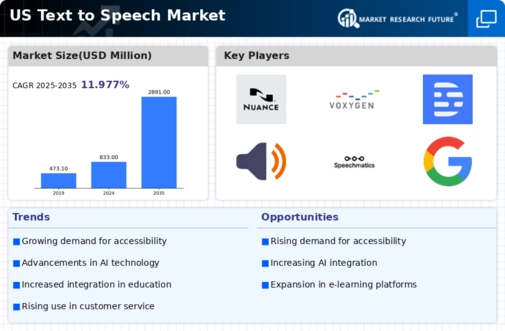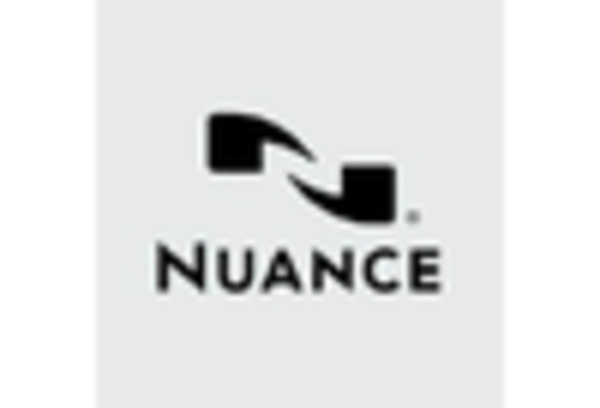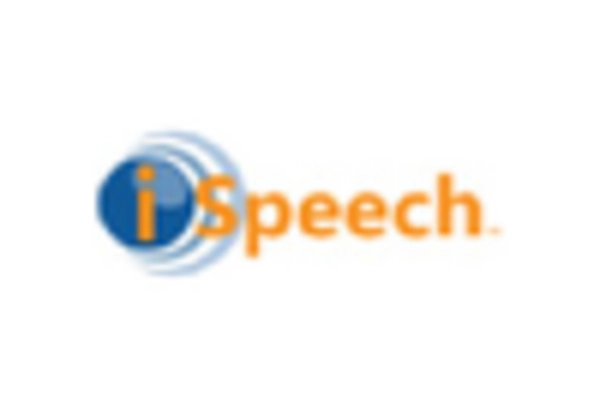The text to-speech market exhibits a dynamic competitive landscape, characterized by rapid technological advancements and increasing demand across various sectors, including education, healthcare, and entertainment. Major players such as Google (US), Amazon (US), and Microsoft (US) are at the forefront, leveraging their extensive resources to innovate and enhance their offerings. Google (US) focuses on integrating AI capabilities into its text-to-speech solutions, aiming to improve naturalness and user experience. Amazon (US), through its AWS platform, emphasizes scalability and accessibility, catering to a diverse clientele. Meanwhile, Microsoft (US) is investing heavily in cloud-based solutions, enhancing its Azure platform to support advanced text-to-speech functionalities. Collectively, these strategies foster a competitive environment that prioritizes innovation and customer-centric solutions.
Key business tactics within the market include localizing services to meet regional demands and optimizing supply chains to enhance efficiency. The competitive structure appears moderately fragmented, with numerous players vying for market share. However, the influence of key players like Google (US) and Amazon (US) is substantial, as they set industry standards and drive technological advancements. This competitive dynamic encourages smaller firms to innovate rapidly, thereby contributing to a vibrant market ecosystem.
In October 2025, Google (US) announced the launch of its latest text-to-speech model, which incorporates advanced neural network technology to produce more human-like speech patterns. This strategic move is likely to enhance user engagement and broaden the application of their services in sectors such as virtual assistance and content creation. By prioritizing naturalness in speech synthesis, Google (US) positions itself as a leader in user experience, potentially attracting new clients and retaining existing ones.
In September 2025, Amazon (US) expanded its text-to-speech capabilities by integrating multilingual support into its AWS Polly service. This development is significant as it allows businesses to reach a broader audience, catering to diverse linguistic needs. The emphasis on multilingual capabilities not only enhances customer satisfaction but also strengthens Amazon's competitive edge in global markets, where language diversity is paramount.
In August 2025, Microsoft (US) unveiled a partnership with a leading educational technology firm to develop customized text-to-speech solutions for e-learning platforms. This collaboration underscores Microsoft's commitment to enhancing educational accessibility and demonstrates its strategic focus on vertical integration within the education sector. By aligning with educational institutions, Microsoft (US) is likely to solidify its presence in a growing market segment, fostering long-term relationships with key stakeholders.
As of November 2025, current trends in the text to-speech market are heavily influenced by digitalization, sustainability, and the integration of AI technologies. Strategic alliances are increasingly shaping the competitive landscape, as companies recognize the value of collaboration in driving innovation. Looking ahead, competitive differentiation is expected to evolve, with a shift from price-based competition to a focus on technological innovation and supply chain reliability. This transition may redefine market dynamics, compelling companies to invest in cutting-edge solutions that enhance user experience and operational efficiency.

















Leave a Comment